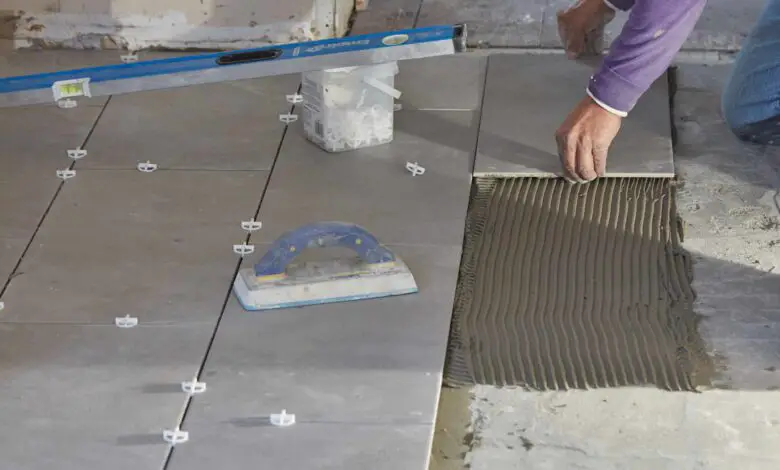Expert Advice: How to Choose the Right Grout for Your Tile Project

Choosing the right grout for your tile project is crucial for both the aesthetic and durability of your installation. Grout not only fills the gaps between tiles but also plays a significant role in the overall look and longevity of your tiled surfaces. With a variety of grout types, colors, and finishes available, making the right choice can seem daunting. This article will guide you through the essential factors to consider, ensuring your tile project is a success.
Understanding Grout Types
1. Cement-Based Grout: Cement-based grout is the most common type used in residential and commercial projects. It comes in two main varieties: sanded and unsanded.
- Sanded Grout: Contains fine sand particles and is used for joints wider than 1/8 inch. It’s durable and less prone to cracking, making it ideal for floors and areas with heavy foot traffic.
- Unsanded Grout: Lacks sand and is smoother, making it suitable for joints smaller than 1/8 inch. It’s commonly used for walls, countertops, and delicate tiles like glass and polished stone.
2. Epoxy Grout: Epoxy grout is known for its exceptional durability and stain resistance. Composed of epoxy resins and a filler powder, it’s waterproof and less likely to crack over time. Epoxy grout is perfect for areas exposed to moisture, such as bathrooms and kitchens, but it can be more challenging to work with due to its quick setting time and higher cost.
3. Urethane Grout: Urethane grout is a flexible, pre-mixed option that offers excellent stain resistance and color consistency. It’s easier to apply than epoxy grout and is suitable for a variety of tile types and locations. However, it can be more expensive and less durable than epoxy grout in high-traffic areas.
Factors to Consider When Choosing Grout
1. Tile Type and Size: The type and size of your tiles will influence the grout you choose. For instance, larger tiles with narrow joints may require unsanded grout for a seamless look, while smaller tiles with wider joints may benefit from the added strength of sanded grout.
2. Location and Use: Consider where the tiles will be installed and the conditions they’ll face. High-moisture areas like showers and backsplashes may require the waterproof properties of epoxy grout. High-traffic areas like hallways and entryways may benefit from the durability of sanded grout.
3. Color: Grout color can significantly impact the overall appearance of your tile installation. Light-colored grout can make a space look larger and more cohesive but may show stains more easily. Dark-colored grout can hide dirt and stains but may make a space feel smaller. Neutral colors like gray and beige are versatile and can complement a wide range of tile colors and styles.
4. Maintenance: Some grout types and colors require more maintenance than others. Epoxy and urethane grouts are generally easier to clean and maintain due to their stain-resistant properties. Cement-based grouts may need sealing to protect against stains and moisture.
Step-by-Step Guide to Choosing the Right Grout
Step 1: Evaluate Your Project Needs Start by assessing your project and identifying the key factors that will influence your grout choice, such as tile type, location, and desired aesthetics.
Step 2: Choose the Grout Type Based on your project needs, select the appropriate grout type:
- For high-moisture areas, opt for epoxy or urethane grout.
- For larger tiles with wide joints, choose sanded grout.
- For smaller tiles with narrow joints, go with unsanded grout.
Step 3: Select the Grout Color Consider the overall look you want to achieve. Use grout color charts and sample swatches to compare options against your tiles. Keep in mind that grout color can either blend in with your tiles for a seamless look or contrast for a bold, defined appearance.
Step 4: Test Grout Samples Before committing to a grout color, test a small area with your chosen grout to see how it looks once applied and dried. This step is crucial as grout color can change slightly as it dries.
Step 5: Consider Grout Additives Some grout types allow for additives that enhance performance. For example, you can add sealers to cement-based grouts to increase stain resistance or use anti-microbial additives to prevent mold growth in damp areas.
Step 6: Plan for Maintenance Understand the maintenance requirements of your chosen grout. Cement-based grouts typically need periodic sealing, while epoxy and urethane grouts require less upkeep. Make sure you’re prepared for the necessary maintenance to keep your grout looking its best.
Common Grout Problems and Solutions
1. Discoloration: Grout discoloration can occur due to improper mixing, inadequate sealing, or exposure to harsh cleaners. To avoid this, ensure proper mixing according to manufacturer instructions, seal cement-based grout, and use gentle, pH-neutral cleaners.
2. Cracking: Grout can crack due to movement in the substrate, improper application, or using the wrong grout type. To prevent cracking, use flexible grout like epoxy or urethane for areas prone to movement, ensure proper application techniques, and use the right grout for your tile size and type.
3. Staining: Stains can result from spills, dirt, and moisture. Epoxy and urethane grouts are highly stain-resistant, making them ideal for areas prone to staining. For cement-based grouts, regular sealing can provide added protection.
Conclusion
Choosing the right grout for your tile project is essential for both functionality and aesthetics. By understanding the different types of grout, considering your project’s specific needs, and planning for maintenance, you can ensure a beautiful, durable tile installation. Whether you’re tackling a DIY project or working with a professional, these expert tips will help you make an informed decision and achieve the best results.

Rubin Everest, a seasoned expert in the world of flooring, brings a wealth of knowledge and passion to the surface. As the mind behind ebbow.com, Rubin is dedicated to sharing insights on the latest trends, innovative solutions, and expert advice in the realm of flooring. Whether you’re seeking practical tips for installation or design inspiration, Rubin Everest is your go-to source for all things flooring-related, making your journey to the perfect floor an informed and enjoyable experience.





